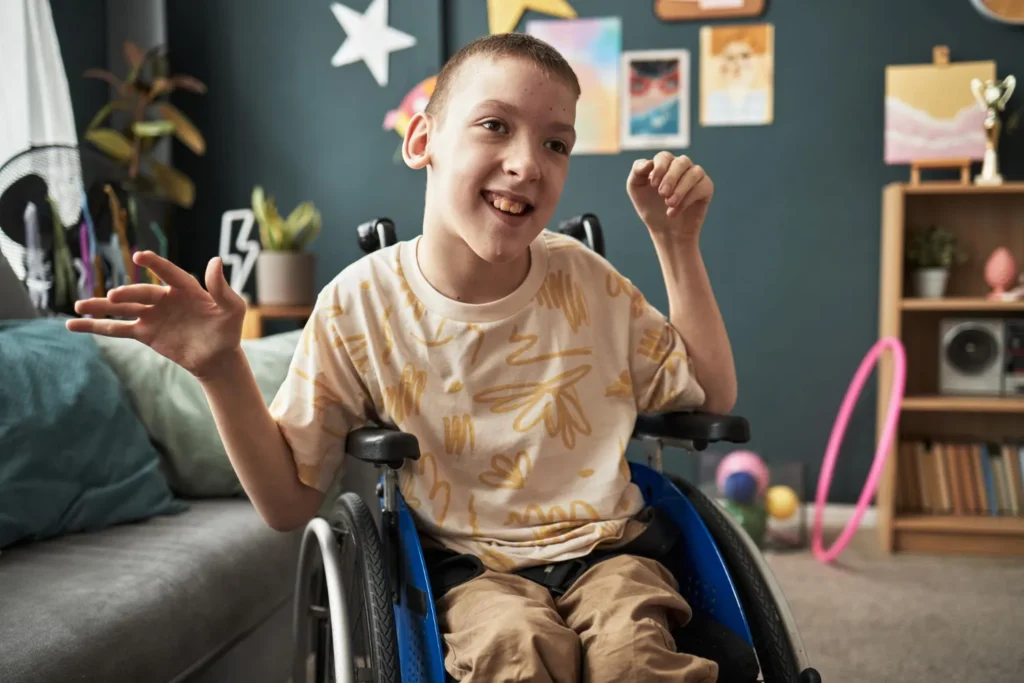Cerebral palsy (CP) is the most common physical disability in childhood, affecting movement and muscle coordination. The National Disability Insurance Scheme (NDIS) in Australia is designed to provide comprehensive, individualized funding to support participants with CP, enabling them to live more independently and participate fully in their communities.
A key support service funded by the NDIS is Occupational Therapy (OT). OTs play a vital role in helping participants with cerebral palsy develop, regain, and maintain the skills needed for meaningful daily activities, which fall under the NDIS goal of “reasonable and necessary” supports.
NDIS Funding for Occupational Therapy
Occupational therapy services are typically funded under the Capacity Building support category of an NDIS plan, specifically the Improved Daily Living sub-category. This funding is designed to build skills and increase independence over time. Funding for necessary equipment (Assistive Technology) or home modifications may come from the Capital budget.
Eligibility for NDIS funding is determined by a permanent impairment that significantly impacts daily life. Cerebral palsy is listed as a “List A” condition, meaning individuals with a diagnosis are very likely to meet the access requirements, especially if the condition is classified as severe (e.g., GMFCS Level 3, 4, or 5).
The Role of Occupational Therapy for CP Participants
Occupational therapists work with participants of all ages, taking a person-centred approach to identify individual goals and develop customised intervention plans.
Here are the key ways OTs support NDIS participants with cerebral palsy:
1. Enhancing Daily Living Skills (ADLs)
OTs provide practical support and strategies to help participants manage essential self-care tasks.
- Self-care: Assistance with showering, dressing, bathing, and personal grooming, often by introducing adaptive techniques or tools.
- Eating and drinking: Recommending specialised cutlery, cups, or plates to improve independence and reduce mess.
- Domestic tasks: Teaching skills for meal preparation, light cleaning, and managing household routines.
2. Developing Motor and Cognitive Skills
Through targeted, evidence-based activities and exercises, OTs help build essential physical and mental capacities.
- Fine and Gross Motor Skills: Improving hand strength, dexterity, balance, and coordination, which are vital for tasks like writing, using a computer, or playing.
- Sensory Processing: Providing tools and strategies for individuals who have difficulty managing sensory input (e.g., sensitivity to sound or touch).
- Cognitive Support: Working on planning, organisation, memory, and problem-solving skills to help with daily routines, school, or work tasks.
3. Recommending Assistive Technology (AT)
A significant part of an OT’s role is assessing and recommending assistive equipment to boost independence and safety. This can range from low-cost consumables to complex systems.
- Mobility aids: Prescribing custom seating systems, wheelchairs, or walking frames tailored to specific needs.
- Communication tools: Recommending devices, software, or communication boards for those with speech difficulties.
- Adaptive tools: Introducing tools like button hooks, jar openers, or specific kitchen gadgets.
4. Modifying the Environment
OTs assess the participant’s home, school, or workplace to recommend changes that enhance accessibility and reduce risk.
- Home modifications: Recommending the installation of ramps, grab rails in bathrooms, stairlifts, or adjusting kitchen counter heights to ensure safety and accessibility.
- Vehicle modifications: Providing assessments and recommendations for vehicle adaptations to facilitate easier and safer transportation.
5. Enhancing Social and Community Participation
Beyond the home, OTs support participants in connecting with their community and pursuing meaningful hobbies and interests. This can involve skill-building for social interactions, finding accessible leisure activities, or planning transport routes.
Related: What Parents Need to Know About the NDIS Early Childhood Approach
Final Thoughts
Occupational therapy is a cornerstone support for NDIS participants with cerebral palsy. By focusing on individual goals and adopting a holistic, person-centred approach, OTs provide the tools, strategies, and environmental modifications needed to navigate life’s challenges. Their interventions are not just about performing tasks; they are about improving quality of life, fostering independence, and empowering participants to achieve their full potential within their homes and communities.

